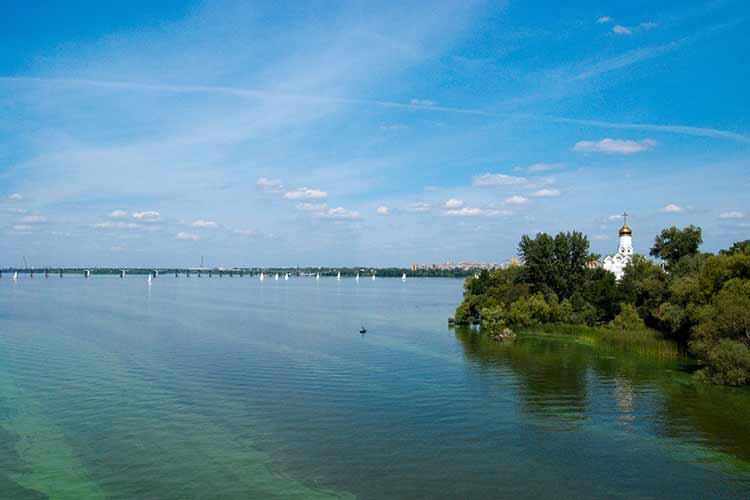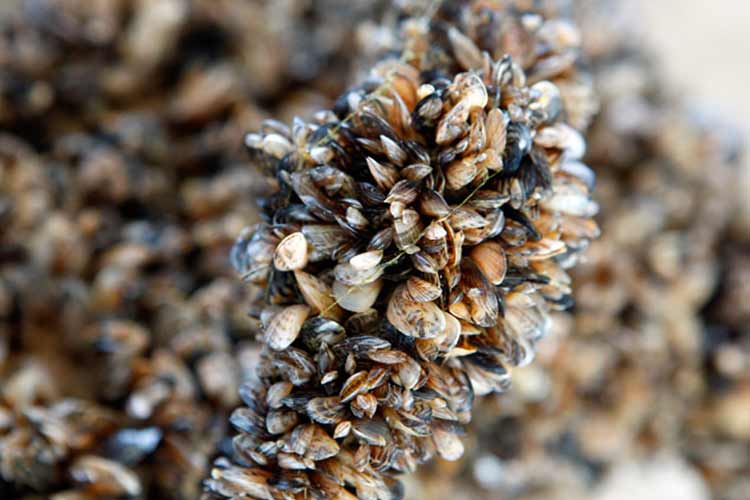
Quagga mussels came to the U.S. from the Dnieper River, one of Europe's largest rivers. Introduced to the Great Lakes in 1986, it took almost 20 years for quagga mussels to be transported across the United States and be discovered in the Lake Mead National Recreation Area. Since their discovery in 2007, many have asked, "How do we get rid of them?" This is a great question to pose to students and life-long learners. Within one year from their discovery in Lake Mead, quaggas had occupied all areas of both Lake Mead and Lake Mohave in good numbers. Each of the female mussels produce nearly a million babies each year putting the current population of quaggas in the lakes somewhere in the trillions. Despite some evidence of a recent leveling off of population numbers, probably due to dwindling food sources, scientists understand that quaggas adapt quickly leading many to speculate that these little mussels are going to stick around for a while. Scientist, researchers, and park managers have collaborated to try to find a solution for invasive species. Specific to Lake Mead NRA, many have proposed solutions such as draining the lakes and indroducing a chemical or predator. While these seem like reasonable solutions, unfortunately they are not realistic. 
Quagga mussels have made themselves at home in Lake Mead. "Drain the Lakes"Due to the Law of the River, this is not technically ‘our’ water to decide how it flows and how it is distributed. Many think that because both lakes Mead and Mohave are reservoirs that it would be an easy task to drain the lakes. However this is not the case; one must think about the repercussions associated with this option. This process must re-route the Colorado River, all while continuing to supply ample amounts of water to California, Arizona, and Mexico. This process would also need to ensure that there is a viable habitat for all of the endangered species like the razorback suckers. Lastly, Glen Canyon National Recreation Area, which is up-river from lakes Mead and Mohave, also have quagga mussels and a strategy must be developed to prevent larva from moving down-river. Unfortunately these are just a few of the of the road blocks that must be considered, however this could be a great problem-posing idea for classrooms. "Introduce a Chemical"There have been a variety of chemical substances that have been proven to kill quagga mussels, none of which are specific to only affecting quagga mussels. When introducing a toxin to an ecosystem there are always repercussion which often result in death. Many believe that lakes Mead and Mohave should get ‘treated’ to kill the quagga mussels, however this will have devastating effects on the native habitat and species. "Introduce a Predator"The most common question associated with invasive species, is what eats them? In the Dniper River, quagga mussel’s have natural predators and habitat, which keeps their population under control. Therefore, it seems like an easy solution to introduce those species into lakes Mead and Mohave, to manage the quagga mussel population. However this is not a viable solution. Species such as the redear sunfish will eat quagga mussels, however research has found that this only occurs when they are the only source of food. In a thriving ecosystem such as lakes Mead and Mohave, the introduction of an invasive fish only causes further competition for food. Other techniques, such as caging, which introduces a predatory fish into a body of water but contains their movement, have been tried, but have also proven to be unsuccessful. Therefore the introduction of a predatory species only causes further harm to the ecosystem. Invasive PlantsPlants can be moved to new areas because of their ability to provide something native plants are not providing such as erosion control, a unique decorative use or even food. Since its introduction, tamarisk has been a big problem for the West. These pesky plants have replaced native vegetation on almost two million acres of land in the western United States. Because each plant can produce 500,000 seeds each year, they can have a devastating impact on their non-native ecosystem by stealing water and crowding out native plants. One adult tamarisk can guzzle up nearly 200 gallons of water a day. |
Last updated: April 5, 2017
